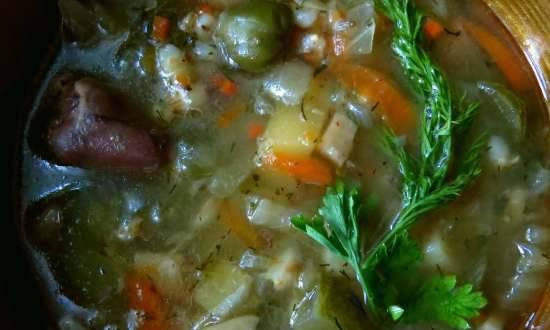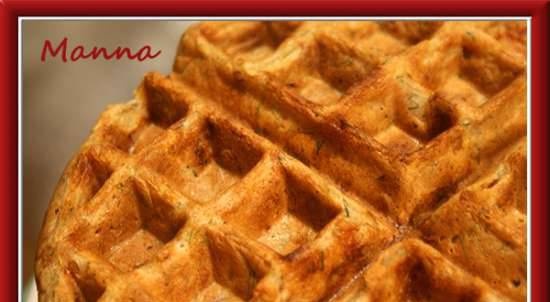|
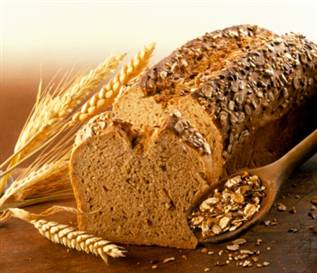
The baking process is fun, simple and enjoyable, but this is only if you are lucky with an assistant - a bread maker. How to choose it so that it suits you perfectly? In order to answer such a difficult question in detail, we decided to conduct home tests of the best, in our opinion, bread makers on the market. Nine bread makers took part in our tests. In each of them we baked three types of bread: white bread, kulich, and also bread according to an interesting recipe of the manufacturer. In general, our mini-bakery worked perfectly, although there were incidents.
Before the start
During the test, we were interested to see the features and evaluate the functionality of the bread makers, to confirm or deny the advantages of the specific functions of each device.
In addition, I wanted to understand what kind of support a novice baker can count on, because most of us have never baked bread and have a vague idea of what kind of process it is.
That is why we paid attention to instructions and recipe books: they should help you quickly get used to a new field. Bread makers Panasonic, Moulinex, Binatone, LG, Bork, Kenwood, Redmond, Daewoo, De'Longhi, Philips, Tefal, Electrolux participated in our test.
What, in fact, to test? A bread maker is ..
The bread maker is an automatic device that takes over the entire baking cycle of classic bread.
She kneads the dough, turning it into a bun, creates a comfortable microclimate for the yeast or sourdough to act, allows the dough to stand and ripen, kneads it in time to release carbon dioxide, and then bakes, calculating the duration of this stage based on the size of the loaf and the required degree of browning. All this is controlled by automation, or rather a set of algorithms that take into account the features of programs. The program is built in strict accordance with the appropriate type of bread.
Review after testing: what bread makers can do
Required programs
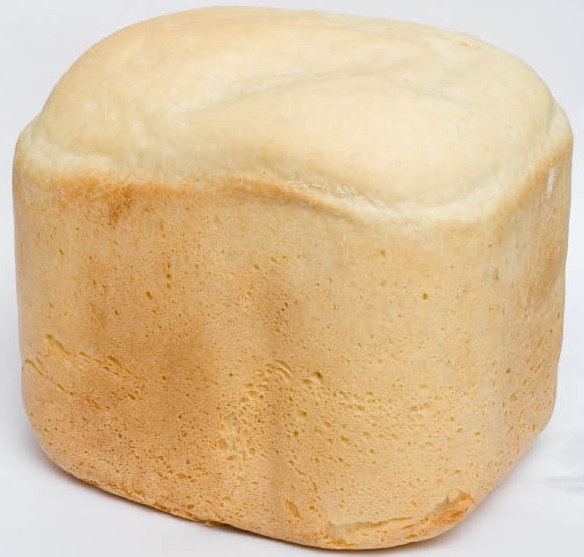 Basic mode, which all bread makers have, including our participants, is baking white bread. Basic mode, which all bread makers have, including our participants, is baking white bread.
It often becomes a favorite, since you can cook in it according to a wide variety of recipes, taking wheat flour as a basis, adding a little rye (no more than half), corn, oatmeal, buckwheat to it, including cheese, olives, yogurt, herbs, nuts and seeds.
The program can be used for rye bread (this is the most difficult and demanding one) with special bakery additives with gluten (eg panifarin).
The second mandatory regime is French white bread with delicate crumb and especially crispy crust.
The third program is an abbreviation for white breaddesigned for emergency situations, and the bread in it turns out to be not so lush and tasty. On average, it lasts about two to two and a half hours (for Kenwood - 2 hours 40 minutes).
Vitesse and Electrolux have the shortest cycles - they last just under an hour.
We have not tested this program, since it is difficult to make a good “quick” bread, you need to experiment a lot to find the optimal recipe.
The fourth program is designed for bread made from special wheat flour: wholemeal, wholemeal or wallpaper *. Kenwood, Electrolux and Panasonic have abbreviated programs for such bread. Often the mode of bread made from coarse flour is mastered by housewives for baking rye. Moulinex, Panasonic, LG have specialized programs exclusively for this type of bread.
Sweet bread program designed for baking. Using it, you can bake a traditional Easter cake (although hostesses often choose the first program for this purpose). The names may be slightly different: “Sweet baked goods”, “Sweet bread”, “Sweet bun” ... Among our participants, only LG and Panasonic do not have such a special mode, in them sweet bread is always baked in the main mode.
Special programs
These are regimens that help people with dietary restrictions make bread. For example, Moulinex has a salt-free bread making mode that can be useful for people with high blood pressure, a tendency to edema, and pregnant women.
Gluten-free bread based on a special mix can be baked in Kenwood, Electrolux and Panasonic machines.
Unusual programs
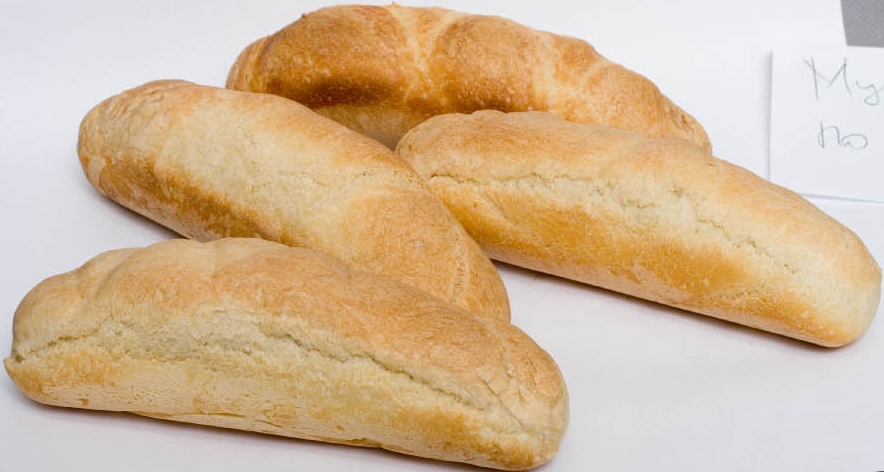 The Moulinex bread machine offers several additional baking modes for small products, especially baguettes, bread sticks, buns, lavash. The programs provide for the stages of kneading and holding the dough, as well as the baking stage, which is already started by the user after a pause. During this pause, you need to remove the dough from the bucket, shape it, put it in special forms from the kit and put it back in the oven. Then the automation takes over. The Moulinex bread machine offers several additional baking modes for small products, especially baguettes, bread sticks, buns, lavash. The programs provide for the stages of kneading and holding the dough, as well as the baking stage, which is already started by the user after a pause. During this pause, you need to remove the dough from the bucket, shape it, put it in special forms from the kit and put it back in the oven. Then the automation takes over.
Cake... The devices can also cook yeast-free baked goods. These are products such as charlottes, muffins, biscuits. On average, the program lasts 1.5 hours. In addition to the main products, the recipes include baking powder and soda.
Bork, Moulinex, Vitesse, VR have a program called Keks, Electrolux has Sweet Pie, and Kenwood has Pastry. Panasonic and Zelmer do not have this mode. The dough can be made by hand and baked in the Bake program. LG has a Keks program, but you have to mix the ingredients yourself.
Baking. This is another important program, it is necessary when you need to cook something according to your own recipe, for example, bake bread with an old sourdough (the algorithm is not suitable for a bread machine, since the preparation of the dough takes about a day). It is also used if the bread has not been baked in the main cycle. Convenient when the baking time can be flexibly selected. For example, up to 70 min. from Moulinex; up to 60 min. for VR; up to 90 min. for Electrolux, Kenwood, Panasonic, with a step of 10 min. For Zelmer and Vitesse bread makers, the cycle turns on for an hour, the user just needs to turn off the device himself when the dish is ready. The LG model does not have a mode with this name, but the "Cupcake" program includes only baked goods, so that the user can use it (duration is 60 minutes).
Helper programs
Dough. Among the auxiliary functions, it is very convenient to prepare the dough: the machine kneads it thoroughly and for a long time, but it is difficult to achieve such a good result with your hands. All machines make it possible to obtain yeast dough. The program includes a kneading and standing stage at a slightly elevated temperature.
Kenwood and Electrolux have lengthy curing programs for home (country) dough.
Unleavened unleavened dough for dumplings, dumplings, homemade noodles, pasties can be obtained using Moulinex and Panasonic. The cycle consists of mixing only. The largest number of dough preparation programs - eight - is offered by Panasonic. As a result, you can get dough from different types of flour, with and without additives, unleavened and pizza dough (simple yeast).
Jam. The second auxiliary function is making jam. This is a complex product that is difficult to cook on a conventional stove, as it burns quickly and requires a lot of attention. You don't have to do anything in the stove - just fold the components. The only drawback is the limited volume of the bucket. The program allows you to cook jam, homemade marmalade, jam. The mode is found in all of our members, except for Zelmer.
Loaf shape and size
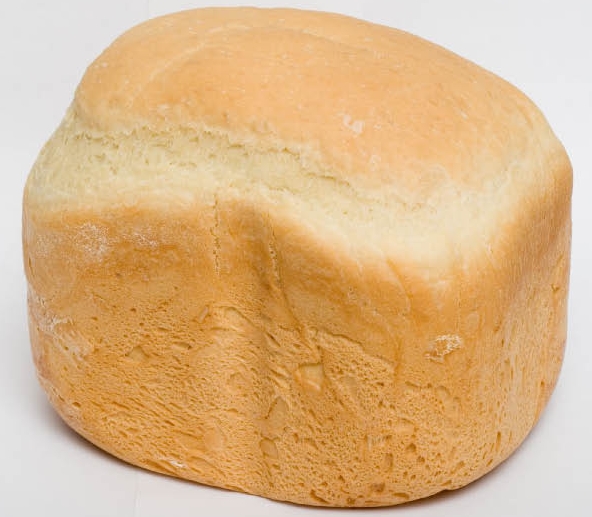 For an average family, a device that bakes loaves up to a kilogram in size is enough. They are the majority in our test. Only Bork and Vitesse are designed for a maximum of 900 g. But the Moulinex model can make bread weighing 1.5 kg, while its dimensions are comparable to other participants in the test. For an average family, a device that bakes loaves up to a kilogram in size is enough. They are the majority in our test. Only Bork and Vitesse are designed for a maximum of 900 g. But the Moulinex model can make bread weighing 1.5 kg, while its dimensions are comparable to other participants in the test.
The shape of Panasonic, Electrolux, Vitesse, Zelmer, Kenwood, Bork and VR loaves is a compact brick. Moulinex has a more elongated brick, outwardly, the bread looks more like a store bread. The LG loaf has an almost square cross section and looks rather tall.
|
Model
|
Loaf weight, g
|
Bucket size, mm (W × D × H)
|
Additional form
|
|
Bork BM 500
|
750/900
|
175×140×155
|
round for cake
|
|
Moulinex OW6002 Baquette and Co
|
750/1000/1500
|
223×126×150
|
2 baguette tins, 2 bun tins
|
|
Vitesse VS 425
|
750/900
|
173×139×155
|
–
|
|
Electrolux EBM 8000
|
500/750/1000
|
182×140×136
|
cake pan
|
|
Panasonic SD 257
|
600/800/1000
|
189×142×148
|
–
|
|
LG HB 3001 BYT
|
500/700/1000
|
145×135×170
|
–
|
|
Kenwood BM450
|
500/750/1000
|
185×140×145
|
round for cake (available on request)
|
|
Zelmer 43Z011
|
500/750/1000
|
183×137×130
|
–
|
|
VR BM-4013V
|
700/1000
|
175×135×157
|
–
|
Control
Buttons
In our test, we encountered three kinds of control buttons:
- sensors - demonstrated the simplicity of assigning a task, easy to clean (Panasonic, LG, Zelmer);
- sensors on the glass - slower response, do not respond to dusty hands, you also cannot make settings in oven gloves (Kenwood and Bork);
- pseudo-sensor buttons - an adequate response to touch, the easiest way for an elderly person to get used to (Moulinex, Electrolux, Vitesse, VR).
Display
Moulinex, Kenwood, VR and Electrolux have a comfortable display and convenient control. A Panasonic display requires mastering several English terms. The Vitesse panel, in our opinion, is not very well located: you have to lean towards it. The worst display is the Zelmer display.
Timer
Used in the appliance to delay the start of the cycle in order to get bread at a certain time. The breadmaker timer is calculated at the end of the cycle. The shortest time period is for Electrolux (12 hours), the longest is for Moulinex and Kenwood (15 hours).
Another point is memory when disconnected. We checked the functionality of this function, and not a single car failed. The shortest time interval (after which the memory contents were reset to zero) was found in the Zelmer machine (5 minutes), the longest - in the Vitesse (15 minutes).
Technical features
First of all, this is the presence of a dispenser - a device that automatically loads raisins and nuts during the kneading process. It is necessary to pour everything you need into it in the proper amount simultaneously with the installation of the bucket in the oven. The device is especially useful when using a timer. The dispenser is available in Panasonic, LG, Kenwood machines.
The second feature is convection. This function is provided by a small fan, which promotes intensive air movement through the oven during the baking process. Convection makes the crust of bread crisper and browns more evenly, even on the top. Convection is available from Electrolux and Kenwood.
The third feature is the backlight, which simplifies the control over the processes taking place in the chamber: we turn on the light bulb and look through the viewing window. Especially important for those who will have the device in a poorly lit place. Among the participants in our test, the backlight is used by Bork, Electrolux, Kenwood, VR.
Ease of inclusion
After completion of work, all machines must be disconnected from the network, which is not always convenient, especially if the outlet is located in a hard-to-reach place. The Kenwood bread maker is the only one with a power button; you do not need to unplug the power cord.
Bread makers, unlike microwave ovens, do not have their own cooling system. Therefore, some models take time to cool down after a cycle that includes baking (high temperature heating). Until then, it is simply impossible to schedule the next task (for example, the display will give an error). Under normal conditions, 15-25 minutes is enough for cooling down, after which the bread maker can be used again in any mode.
Your place in the kitchen
most housewives define a permanent place for their bread maker. And, accordingly, the model is chosen based on its size and features. The bread makers presented in our test have three types of "figures": in the form of a casket with a width much greater than the length and depth, in the form of a box with a height exceeding the width / depth, and a round complex shape.
The box bread makers are Kenwood, Bork, Electrolux and VR. They can be placed on a narrow console or pedestal, and it is good if it is slightly lower than the traditional table top, since the control panels of these bread makers are horizontal (in this case they will be better visible). If you put the devices on an ordinary table, you need to provide for the possibility of their temporary advancement forward, since it will be inconvenient to make settings near the wall of a standard tabletop (60 cm deep) (you cannot see the display).The socket should be close, for Electrolux and Bork it is better on the right.
The tall box devices - LG and Panasonic - have a smaller footprint and are more compact. But they need more free space in height, that is, the absence of sockets, rails and shelves in the chosen place is welcomed. The control panels of both appliances are slightly tilted, so if the bread makers are on a standard 85 cm worktop, adjustments are very convenient. Panasonic has the power cord at the back, while LG has the right.
Moulinex, Vitesse and Zelmer bread machines have a bionic shape that resembles an overgrown bun of ripening dough. The control panels are installed at the front, on an inclined wall, which is very convenient. These devices should be placed not along, but across the tabletop, so that you can choose a place for them on the edge of the table, against the wall. If the outlet is on the right, Moulinex and Zelmer are more suitable, if on the left - Vitesse.
If there is no outlet near the chosen place, the Zelmer bread maker may be the most suitable option for you: it has the longest cord - 1.6 m.
Weight
The lightest bread maker we have was Zelmer (5.4 kg; by the way, it has grooves to make it easier to hold when carrying), and the heaviest is Kenwood (8.5 kg).
Design
it is clear that we all strive for some kind of harmony in the kitchen, and therefore we choose the appliances so that they fit well into its interior. Kenwood, Bork, Electrolux, VR and Moulinex stoves will go well with black glass ceramic hobs and ovens finished with stainless steel. Most of all they will be impressed by modern interiors, high-tech kitchens.
The rest of the models - LG, Panasonic, Vitesse and Zelmer - are white and more versatile. They will look good in modern, country and classic kitchens.
Noiselessness
Another point worth paying attention to is the noise during operation. The first (or second) stage of the bakery program is the intensive kneading of the dough. This is the time when you can clearly hear what is happening in the oven without even going up to it.
Sometimes this noise can be very inappropriate: for example, if you have a kitchen combined with a room, it will be a source of discomfort, in addition, you will not risk using the night timer every time, that is, schedule baking bread for breakfast.
Kenwood and Electrolux bread machines are recognized as the loudest during operation. If silence is important to you, then LG and Panasonic models are best for you.
Ease of service
Kenwood and Electrolux appliances with glass panels and doors will require the most attention. Every speck of dust is visible on them, and when working with dough and sifting flour, the formation of flour dust is simply inevitable. It will have to be constantly shaken off, although thanks to the flat surface this is done literally in one movement. The Bork bread maker has a glass insert on the lid, and it covers the control unit. Dust accumulates here too, only it is more difficult to remove it, since it collects in the corners and sticks to the surface.
All white appliances (LG, Panasonic, Vitesse, Zelmer) require a minimum of outside maintenance.
Inside, all test participants remained practically clean, a few crumbs are collected with a damp cloth in a matter of minutes. But the Panasonic car turned out to be capable of strongly "dusting" with flour. The fact is that in the process of kneading, we decided that for a good kolobok it was necessary to add flour (apparently, its moisture content was lower than standard). This flour, not having time to get wet, scattered to the sides, settling on all the inner surfaces of the stove, which was not observed in other models. Then this flour, of course, burnt (later we began to take this feature into account, and the car began to behave more accurately). The Bork bread maker was also dusty with flour when added, but to a much lesser extent.
Profitability and price
The Moulinex bread machine consumes the most energy (1.65 kW), and the most economical one is Panasonic (550 W).
The cost of the device is often the deciding factor when choosing. The most affordable models were Vitesse, VR and Zelmer (3800 rubles./ 3500 rubles), and the most expensive - Bork and Kenwood (9000 rubles). I was pleasantly surprised by the price of Electrolux (5500 rubles), because its functionality and design are in many ways close to Kenwood (excluding programming).
|
Model
|
Consumed
Power, W
|
Warranty,
years
|
Price,
rub.
|
|
Bork BM 500
|
615
|
1
|
9000
|
|
Moulinex OW6002 Baquette and Co
|
1650
|
2
|
7000
|
|
Vitesse VS 425
|
600
|
1
|
3800
|
|
Electrolux EBM 8000
|
680
|
1
|
5500
|
|
Panasonic SD 257
|
550
|
|
8000
|
|
LG HB 3001 BYT
|
650
|
1
|
4700
|
|
Kenwood BM450
|
780
|
1
|
8990
|
|
Zelmer 43Z011
|
715
|
1
|
3500
|
|
VR BM-4013V
|
615
|
2
|
3 500
|
Bread is the head of everything, and flour is the basis of bread
Failures in baking are most often associated with the fact that it is rather difficult to immediately assess the features laid down in the recipe by the manufacturer. None of the instructions give specific explanations for each recipe, and it is not known how in each case the dough should behave when mixing and how the bun will look like.
Therefore, we proceeded from the assumption that it should be traditional (dense, not sticky, round), and added a little flour if the dough behaved differently when mixing.
Let me remind you that flour - the main ingredient in bread - can differ in quality (in particular, in gluten content) and moisture, and even flour from the same batch gives a different consistency of the dough.
Another important point. Any recipe needs a run-in, as the weights suggested by the manufacturer and available in your home may not exactly match.
Wallpaper flour is made by grinding whole grains together with the shell. Other common names: whole, whole grain, grain, whole, plain, coarse.In some cases, in the instructions, the meter is generally measured by eye (say, 2 and 2/3 cups of flour). You can fill a cup with flour in different ways: pour it in, scoop it up (leaving the voids), fill it tightly with a spoon, etc.
During such a quick test, we simply could not physically assess the quality of the recipe and were just trying to understand how the device works.
As a composition similar to wallpaper wheat flour, you can use a mixture of 9 parts of premium wheat flour and 1 part of wheat bran.
How to repeat our test at home
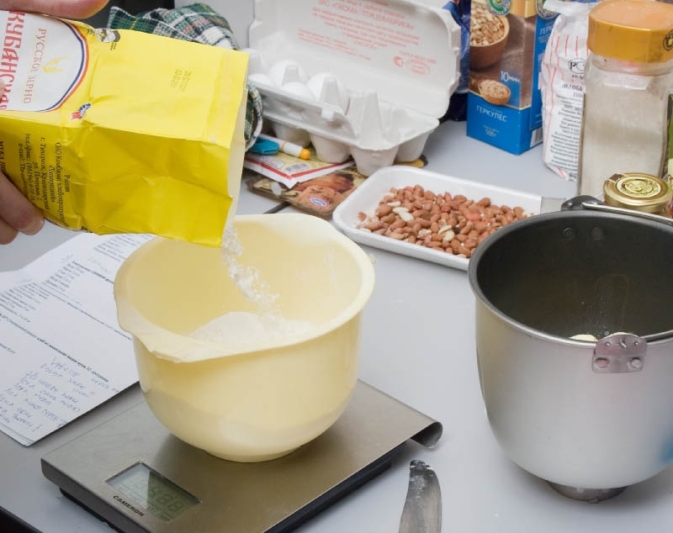  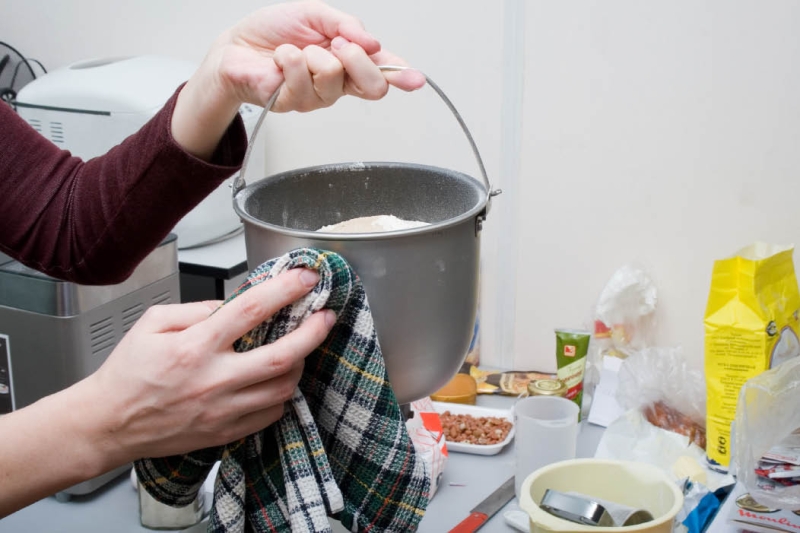  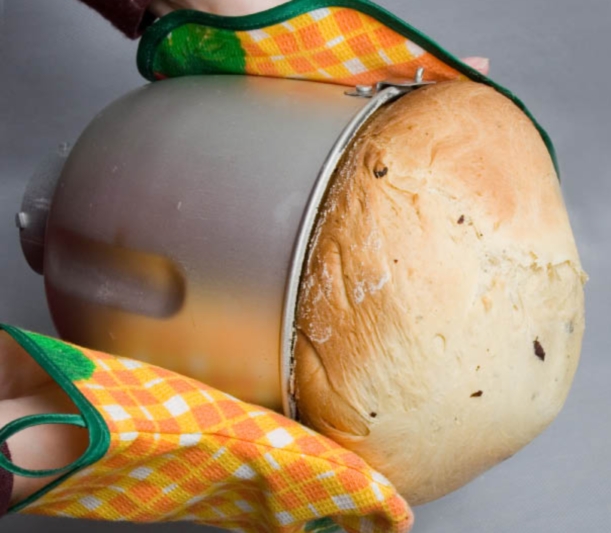
1. We take out the bucket from the stove. According to the selected recipe, we add the components to it. Depending on the manufacturer's recommendations, we start with either liquid (water, milk, eggs) or dry (yeast, flour). The order is always strictly negotiated and is indicated in the branded recipes. In this case, the flour must be sifted, if required by the recipe - heat the liquid, melt the butter.
2. Install the bucket in the oven.
3. Set the settings: select the program (according to the recipe), indicate the weight of the loaf (if any), the color of the crust.
4. The machine performs the algorithm inherent in its memory. A complete white bread baking cycle takes about three hours.
5. When the program is completed, a beep will sound. We take out the bucket from the oven (putting on mittens) and shake the loaf out of it. Leave the hot bread on the wire rack to cool.
A timer can be used to prepare bread at a specific time.
And don't forget: you can't go without a baker!
Solid algorithms of devices, developed by engineers and chefs, almost always guarantee a good baking result in a bread maker, which our test confirmed once again.
And yet, one cannot do without vigilant participation in the baker's business. He must acquire several simple skills: learn to intuitively assess the state of the kolobok, quickly and accurately bookmark products in accordance with the recipe. Feel what changes in the recipe are acceptable and what they will give in the end.
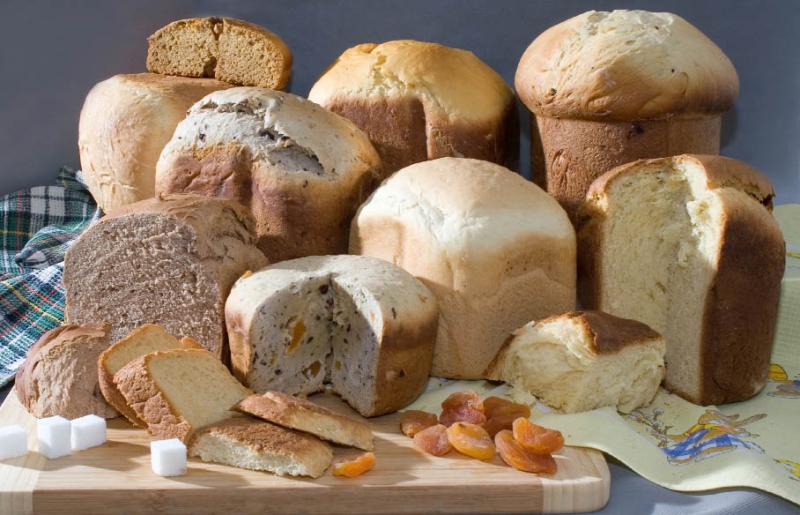
A source: Buy magazine Household appliances
Text: Olga KUZMINA.
|







 Basic mode, which all bread makers have, including our participants, is baking white bread.
Basic mode, which all bread makers have, including our participants, is baking white bread. The Moulinex bread machine offers several additional baking modes for small products, especially baguettes, bread sticks, buns, lavash. The programs provide for the stages of kneading and holding the dough, as well as the baking stage, which is already started by the user after a pause. During this pause, you need to remove the dough from the bucket, shape it, put it in special forms from the kit and put it back in the oven. Then the automation takes over.
The Moulinex bread machine offers several additional baking modes for small products, especially baguettes, bread sticks, buns, lavash. The programs provide for the stages of kneading and holding the dough, as well as the baking stage, which is already started by the user after a pause. During this pause, you need to remove the dough from the bucket, shape it, put it in special forms from the kit and put it back in the oven. Then the automation takes over. For an average family, a device that bakes loaves up to a kilogram in size is enough. They are the majority in our test. Only Bork and Vitesse are designed for a maximum of 900 g. But the Moulinex model can make bread weighing 1.5 kg, while its dimensions are comparable to other participants in the test.
For an average family, a device that bakes loaves up to a kilogram in size is enough. They are the majority in our test. Only Bork and Vitesse are designed for a maximum of 900 g. But the Moulinex model can make bread weighing 1.5 kg, while its dimensions are comparable to other participants in the test.




